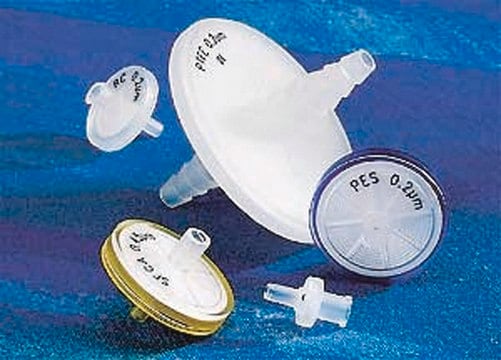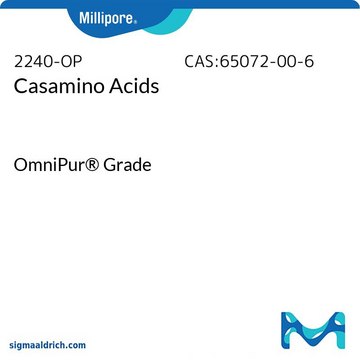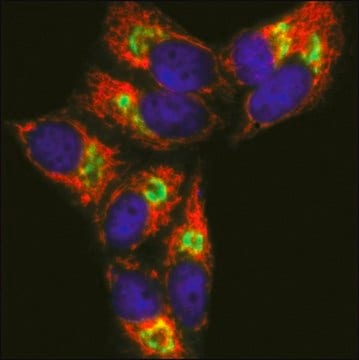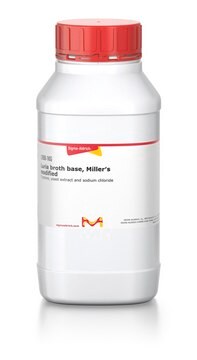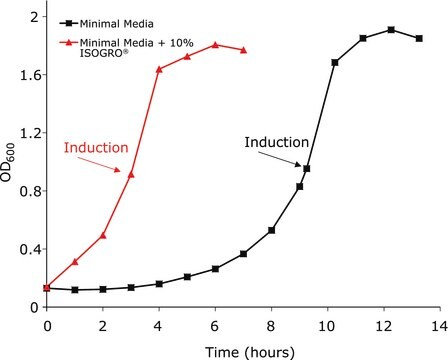63011
M9 Broth
suitable for microbiology, NutriSelect® Basic
Sign Into View Organizational & Contract Pricing
All Photos(1)
About This Item
UNSPSC Code:
41171607
NACRES:
NA.74
Recommended Products
sterility
non-sterile
Quality Level
form
powder
composition
ammonium chloride, 1 g/L
disodium hydrogen phosphate, 6 g/L
potassium dihydrogen phosphate, 3 g/L
sodium chloride, 0.5 g/L
manufacturer/tradename
NutriSelect® Basic
technique(s)
microbiological culture: suitable
final pH
7.4±0.2 (25 °C)
application(s)
food and beverages
life science and biopharma
microbiology
suitability
nonselective for Escherichia coli
nonselective for coliforms
Application
M9 Broth is used as a microbiological growth media and for the preparation of phage and plasmid DNA using E. coli K12 strains, acc. to Miller (1987).
Preparation Note
Dissolve 10.5 g in 1 litre distilled water and adjust the pH to 7.4. Sterilize by autoclaving at 121°C for 15 minutes. Add 2 ml 1 M magnesium sulfate (Cat. No. 63133; filter sterilized) and 20 ml of 20% solution from a carbon source (such as glucose; Cat. No. 49140)
Footnote
We offer two media types: the superior granulated GranuCult® and the cost-efficient powdered NutriSelect® culture media, depending on your needs.
The designations basic, plus, or prime are added to indicate the quality control level, from basic quality control to standard QC plus to prime for full regulatory compliance.
The designations basic, plus, or prime are added to indicate the quality control level, from basic quality control to standard QC plus to prime for full regulatory compliance.
Legal Information
GRANUCULT is a registered trademark of Merck KGaA, Darmstadt, Germany
NutriSelect is a registered trademark of Merck KGaA, Darmstadt, Germany
Storage Class
11 - Combustible Solids
wgk_germany
WGK 1
flash_point_f
Not applicable
flash_point_c
Not applicable
ppe
Eyeshields, Gloves, type N95 (US)
Choose from one of the most recent versions:
Already Own This Product?
Find documentation for the products that you have recently purchased in the Document Library.
Customers Also Viewed
Khaled M Khleifat et al.
Current microbiology, 57(4), 364-370 (2008-07-30)
A successful attempt was made to isolate linear alkylbenzene sulfonate (LAS)-degrading bacteria from soil irrigated with wastewater. The isolated bacteria were able to use LAS as sole carbon and energy source. Maximum growth rates on LAS reached only 0.27 h(-1).
D Pérez-Conesa et al.
Journal of food protection, 74(1), 55-62 (2011-01-12)
Carvacrol and eugenol were encapsulated in micellar nonionic surfactant solutions to increase active component concentrations in the aqueous phase and used to treat two strains of Listeria monocytogenes (Scott A and 101) and two strains of Escherichia coli O157:H7 (4388
Pyoung Il Kim et al.
Journal of microbiology and biotechnology, 20(1), 138-145 (2010-02-06)
A bacterial strain isolated from soil for its potential to control the anthracnose disease caused by Colletotrichum gloeosporioides was identified as a Bacillus subtilis. Bacillus subtilis CMB32 produced antifungal agents on M9 broth at 30degreesC. Biosurfactant lipopeptides produced by Bacillus
Nancy Valentine et al.
Applied and environmental microbiology, 71(1), 58-64 (2005-01-11)
Matrix-assisted laser desorption ionization-time-of-flight mass spectrometry (MALDI-TOF MS) has been used to identify bacteria based upon protein signatures. This research shows that while some different proteins are produced by vegetative bacteria when they are cultured in different growth media, positive
Practical aspects of preparing phage and plasmid DNA: growth, maintenance, and storage of bacteria and bacteriophage.
H Miller
Methods in enzymology, 152, 145-170 (1987-01-01)
Our team of scientists has experience in all areas of research including Life Science, Material Science, Chemical Synthesis, Chromatography, Analytical and many others.
Contact Technical Service



